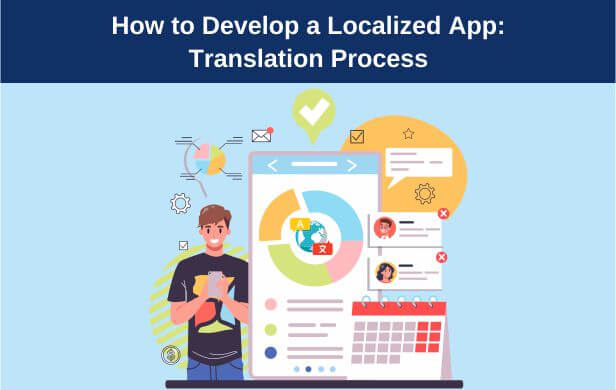
Developing a localized app involves a comprehensive translation process to adapt the app to different languages and cultures. This process requires careful planning and execution to ensure accurate and culturally appropriate translations. A step-by-step approach, from internationalization to quality assurance and ongoing updates, is essential. By following a systematic translation process, you can create a localized app that resonates with your target audience and maximizes your app's success in international markets.
Developing a localized app requires careful planning and execution to ensure a seamless translation process. Here is a step-by-step guide to developing a localized app:
Identify the target markets for launching your app. Consider factors such as language preferences, cultural differences, and market demand. This will help you prioritize languages for localization and tailor your app accordingly.
Before diving into translation, ensuring that your app is internationalized is crucial. Internationalization involves designing and developing your app in a way that allows for easy localization. This includes separating the app's content from the source code, implementing Unicode support for multilingual text, and considering language-specific variables like date formats, number formats, and text direction.
Gather all the app's content that requires translation, including user interface text, app store descriptions, in-app messages, notifications, and multimedia elements like images and videos. Prepare these resources in a format that is easily accessible for translators, such as spreadsheets or localization management tools.
Work closely with the translators to provide them with context and guidelines for the translation. Share any brand guidelines, style guides, or glossaries you have to maintain consistency. Encourage open communication to address any questions or clarifications during the translation process.
The translation process begins with translating the app's text into the target languages. However, localization goes beyond translation and involves adapting the content to suit each target market's cultural and linguistic nuances. This includes localizing images, symbols, colors, and other visual elements to align with local preferences and cultural norms.
Implement a comprehensive quality assurance process to ensure the accuracy and consistency of the localized app. This involves thorough proofreading, linguistic review, and functional testing to identify and resolve any linguistic, cultural, or technical issues. Conduct thorough testing on different devices and operating systems to ensure the app functions flawlessly in all localized versions.
Localize your app store descriptions, keywords, and other metadata to improve the visibility and discoverability of your app in each target market. Optimize the text to align with the local language, search trends, and cultural context. This will enhance your app's chances of appearing in relevant search results and attract users.
Engage with beta testers and collect user feedback to gauge the effectiveness of the localization efforts. User feedback can help identify any areas that may need improvement or adjustment. Addressing user feedback and making necessary updates will further enhance the localized user experience.
Localization is ongoing, especially as your app evolves and new updates are released. Plan for ongoing localization support to ensure that the localized versions of your app remain up to date and aligned with the latest app features, content, and changes.
Pay attention to cultural sensitivities and adapt the app's content accordingly. This includes avoiding cultural stereotypes, taboo words or expressions, considering local holidays and traditions, and ensuring that the content is culturally appropriate and respectful to the target audience.
Monitor the performance of your localized app versions post-launch. Analyze user engagement, conversion rates, and feedback to optimize and continuously improve the localized app experience. Regularly update the localized content to provide users with fresh and relevant information.
Localisation Experts at Language Services Bureau follow this process. Localization goes beyond mere translation - it involves adapting the app to suit different regions' cultural, linguistic, and functional preferences. Collaborating with professional language service providers and experienced translators is crucial to ensure accurate and culturally appropriate translations.
By following these steps and adopting a strategic approach to app localization, we at Language Services Bureau can successfully develop a localized app that meets your target audience's linguistic and cultural expectations and sets you apart from competitors in the global marketplace. Embracing app localization is a key factor in achieving international success and connecting with users around the world.
For any queries related to language translation services. Inquire at our email address below or give us a call today!
info@languageservicesbureau.com
Telephone: +91-20-24470509, +91-82370 60559
Similar articles for you...

आमच्या गेल्या महिन्यातील ब्लॉग मध्ये भाषांचे ज्ञान आवश्यक असणाऱ्या करियर क्षेत्रांची माहिती आपल्याला मिळाली. जिथे भाषेचे ज्ञान फायद्याचे ठरते असे इतर व्यवसाय आपण या महिन्यात पाहुयात.

Posted by : Language Services Bureau

The time it takes to learn a language depends on what you want to do with it– here is a great article about language learning and the kind of expectations you can set about the time required for the same!